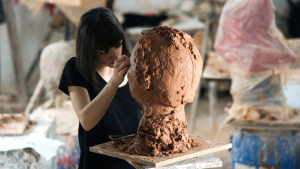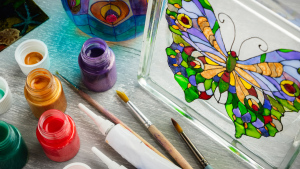
While sculpting might seem like a complicated art form, it’s a lot easier to get started with than you might think! Take a look at the article to find out some of the different tips and tricks that you can use to get your sculpting started on the right foot.
Have the Right Tools for the Job
To get started, it’s important to have the right tools for the job. The type of tools you’ll need will depend on the medium you’ve chosen. For clay sculpting, basic tools like a rolling pin, cutting wire, and modeling knives will get you started
If you’re working with wood instead, you’ll need a saw, chisels, and hammers to get started. And finally, stone sculpting requires chisels and hammers. You will also need other hand tools designed specifically for stone carving.
No matter what your chosen medium is though, having the appropriate tools on hand is key to success. So be sure to stock up before getting started!
Choose Your Clay
There are a variety of clays that you can use for sculpting, each with its benefits and drawbacks. Here are some things to consider when choosing clay for your project:
What is the final product going to be used for? If it will be on display or handled frequently, you’ll want stronger, more durable clay. If it’s just for decoration, softer clay may be fine.
How detailed do you need the sculpture to be? Some clays are better suited for intricate details than others.
Do you need the clay to hold its shape well? If so, you’ll want clay that dries hard.
Is weight an issue? Heavier clays can be difficult to work with if you’re not used to them.
Once you’ve considered all these factors, you can narrow down your choices. You can then select the best clay for your needs.
Envision the Final Shape
When you’re starting with sculpting, it can be difficult to know what the final shape of your sculpture will be. In this section, we’ll give you some tips and tricks on how to envision the final shape of your sculpture.
One way to do this is to think about the overall shape of the sculpture. What kind of lines does it have? Is it symmetrical or asymmetrical? What sort of curves does it have? Once you have an idea of the general shape, you can start to fill in the details.
Another way to think about the final shape of your sculpture is to consider the negative space around it. What sort of shapes do you see when you look at the sculpture from different angles? This can help you to see what sort of lines and curves will work well with the overall design.
Finally, don’t be afraid to experiment! Try out different shapes and sizes until you find something that feels right. With a little practice, you’ll be able to visualize the final shape of your sculpture before you even start carving it out!
Practice Makes Perfect
No matter what your skill level is, it’s important to practice regularly if you want to see improvement in your sculpting. Whether you’re just starting or you’ve been sculpting for years, there are always new techniques to learn and old ones to master.
One of the best ways to practice is to find a good tutorial or class and follow along. There are also plenty of resources available online and in books. Another great way to learn is by observing other artists at work, either in person or online.
Once you have a solid understanding of the basics, it’s time to start practicing on your own. Experiment with different materials, styles, and techniques. Don’t be afraid to make mistakes – that’s how we learn and improve!
Keep Your Sculptures Simple
When starting with sculpting, it is important to keep your sculptures simple. This will help you to get a feel for the medium and how to work with it.
Once you have a handle on the basics, you can start to add more complex details to your sculptures. Here are some tips for keeping your sculptures simple:
Stick to Basic Shapes
Start with simple shapes like spheres, cylinders, and cubes. Once you have mastered these, you can move on to more complex shapes.
Use Fewer Colors
Using fewer colors will help to keep your sculpture looking clean and simple. Try using just one or two colors at first. Then gradually add more as you become more confident with your skills.
Avoid Too Many Details
It is tempting to want to add lots of small details to your sculpture, but this can often make them look cluttered and busy. Try to resist the urge and stick to larger, simpler forms.
By following these tips, you will be able to create beautiful, simple sculptures that are perfect for beginners. So get started today and see what amazing creations you can come up with!
Use Reference Photos or Images When Sculpting
When you’re starting with sculpting, it can be helpful to have reference photos or images on hand. This can help you get a feel for the shapes and forms you’re trying to create.
This can be anything from a picture of a face or figure you’re trying to recreate, to simply some abstract shapes that you want to use as inspiration. Having something to look at while you work can help you better visualize the final product and make the sculpting process easier overall.
Enjoy the Process
The best way to enjoy the process is to relax and have fun with it. There are no rules when it comes to clay sculpting, so feel free to experiment and be creative.
Remember, there are no wrong answers when it comes to clay sculpting. So go ahead and try out as many different techniques as you like. The only way to get better at it is to practice, so have fun and enjoy the process!











